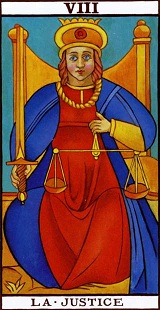
Human thought results in the diremption of the Cosmos, into Macrocosm and Microcosm. The Macrocosm is what we experience through our senses, the Microcosm what we experience through thought. Through our senses – colour, shape, sound, and so on – we ascertain that something is. But it is through thought that we understand what it is.
In the diagram by Robert Fludd we see the arrangement of the Microcosm. The three Hermetic sciences — Alchemy, Astrology, and Theurgy — address different sections of the diagram as shown in the following chart.
| Microcosm | Macrocosm | |
|---|---|---|
| Thought | Senses | Method of experience |
| Alchemy | Chemistry | Study of the elements. |
| Astrology | Astronomy | Study of stars and planets. |
| Theurgy | Science | Study of angelic hierarchies. |
Now astrology is no more concerned with the effect of the stars on our future than alchemy is with chemical experiments in the lab. Alchemy is concerned with spiritual transformation based on the elementals. Astrology then is concerned with the planets and their relationship to the stellar heavens.
As we have shown, Rudolf Steiner devoted a book to understanding astrology. The constellations represent systems of thought that cohere together. It is curious that people of a given worldview will take the same position on any new issue that may come up. This is because their thought patterns are determined by the constellations. The planets correspond to different “moods” that affect thoughts in certain ways. In the course of one’s life, the moods may change, or one may find oneself in a different thought constellation. Besides your “sun sign”, there may be other constellations that have a smaller, but not negligible, effect on thought patterns.
In Meditations on the Tarot, Tomberg makes clear that the Hermetic method involves understanding by analogy, not physical causation. Thus, we understand astrology as analogous to astronomy, as there is no question of the stars having a physical causation on our destinies. This is not to deny the possibility of synchronicity, that is, a strange coincidence between an exterior situation and an interior one. Tomberg was certainly familiar with Steiner’s book, but he updated his conception to include Jung’s idea of archetypes, which he defines as “astrological planetary influences”.
Tomberg defines “characterology” as “microcosmic astrology”. In coming to self-knowledge, the understanding of human types is essential. By self-observation we come to understand our own type and thus learn how to transcend it. Otherwise, a man is enslaved to the constellations of thought (his “horoscope”) that form his character.
The ordinary man is a product of temperament (the elemental forces) and character (his astrological sign). Only by awakening his spirit can a man develop a true conscience. Tomberg writes:
Freedom is a fact which one experiences when one judges not by his temperament (“etheric body”) nor by his character (“astral body”), but rather by the Scale of Justice, or by his own conscience. … Conscience is neither a product nor a function of character. It is above it. And it is there, and only there, that the domain of freedom begins and is situated. One is not at all free when one judges or acts according to character or temperament, but one certainly is when one judges and acts according to the scale of Justice or conscience. But Justice, the praxis of the scale, is only the starting point for a long progression and development of conscience, and therefore of the growth of freedom.

One Reply to “Freedom is a Fact”
Comments are closed.